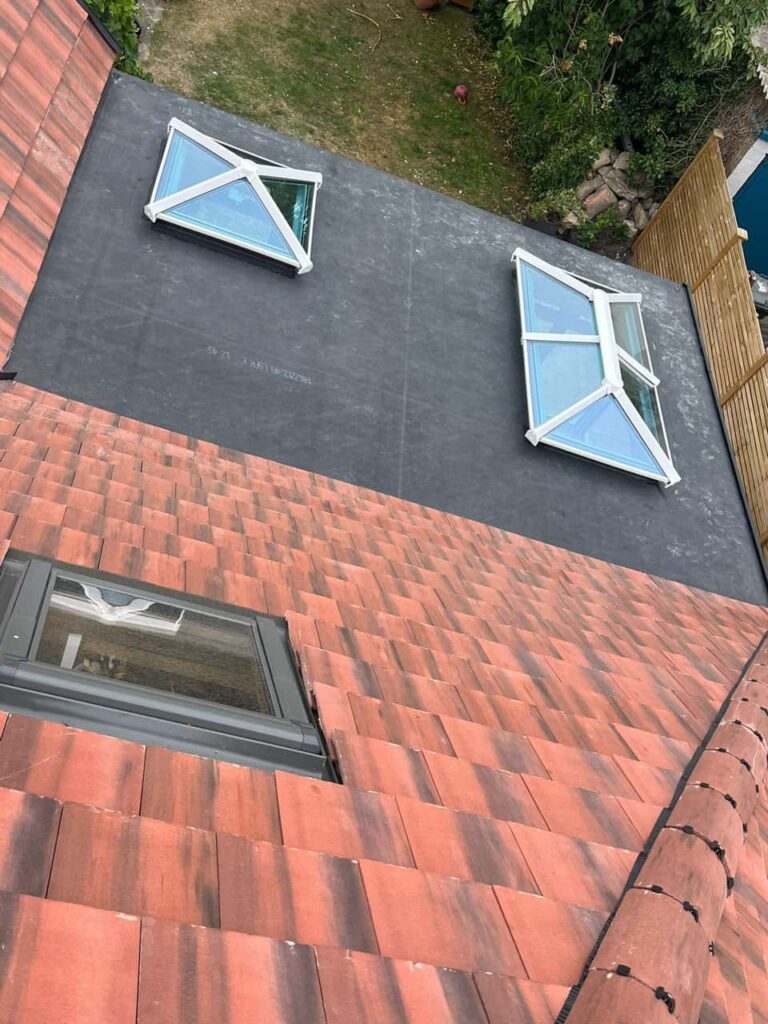Introduction: When replacing a flat roof, selecting the right material is not just a matter of aesthetics; it’s about functionality, longevity, and return on investment. Flat roofs are preferred for many commercial and modern residential buildings, but they come with specific requirements, especially regarding the roofing material used. This blog post will guide you through the key considerations and options available for flat roof replacement, helping you make an informed decision tailored to your needs.
Factors to Consider
Before diving into the options, it’s essential to understand the factors that influence the choice of roofing material for a flat roof:
- Climate: The local weather patterns significantly affect the selection of a suitable material. Areas with heavy rain, snow, or extreme temperatures require materials that can withstand harsh conditions.
- Durability: The lifespan of the roofing material is crucial. Choosing a material that balances cost and longevity can result in long-term savings.
- Energy Efficiency: Materials that provide better insulation can help reduce heating and cooling costs, making your building more energy-efficient.
- Weight: The structural integrity of your building will determine how much weight your roof can support. Some materials are heavier than others and may require additional reinforcement.
- Maintenance Requirements: Some roofing materials require more maintenance than others. Consider how much time and resources you are willing to invest in upkeep.
- Budget: Cost is always a consideration. It’s important to balance upfront costs with the material’s expected lifespan and maintenance expenses.
Popular Roofing Materials for Flat Roofs
Here’s a rundown of some popular roofing materials used in flat roof replacement, along with their pros and cons:
- EPDM (Ethylene Propylene Diene Monomer)
- Pros: EPDM is a rubber roofing material known for its durability, ease of installation, and low maintenance. It is also lightweight and highly resistant to weathering, UV rays, and thermal shock.
- Cons: The black colour of standard EPDM can absorb much heat, which may increase cooling costs unless insulated properly.
- TPO (Thermoplastic Polyolefin)
- Pros: TPO is favoured for its reflective properties, helping to keep buildings cooler and reduce energy costs. It is resistant to UV light, punctures, and chemicals.
- Cons: The longevity of TPO can vary, and the quality depends significantly on the installer’s expertise.
- PVC (Polyvinyl Chloride)
- Pros: PVC is highly resistant to fire, chemicals, and oils, and like TPO, it features heat-welded seams that create a watertight bond.
- Cons: PVC is generally more expensive than other single-ply membranes and can be less flexible in colder climates.
- Modified Bitumen
- Pros: This material is a modern take on built-up roofing with reinforced asphaltic sheets. It offers excellent waterproofing characteristics and is easy to repair.
- Cons: Installation involves using open flames, which can be a safety risk and might increase installation costs.
- Built-up Roofing (BUR)
- Pros: BUR is one of the oldest and most reliable materials for flat roofs and is known for its robust protection against water.
- Cons: It is heavy, requires significant labour for installation, and involves multiple layers, which can be time-consuming.
Conclusion: Choosing the right material for a flat roof replacement involves carefully considering various factors, including climate, building structure, budget, and personal preferences regarding maintenance and aesthetics. Each material offers unique benefits and challenges, so evaluating which option best aligns with your specific needs is important. Consulting with a professional roofer can provide additional insights and help ensure that your investment in a new roof is sound, sustainable, and suitable for your building’s requirements. By making an informed choice, you ensure that your roof can withstand the test of time and the elements, providing security and comfort for years to come.
Call us on: 01623 579 292
Click here to find out more about Rainworth Roofing Repairs
Click here to complete our contact form and see how we can help with your roofing needs.

